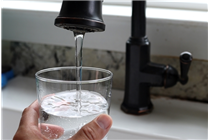A Comprehensive Guide to Purchasing a Water Purifier
Summary:
- Navigating the water purifier market can be confusing given the array of marketing claims.
- Understanding your home’s water quality and needs is crucial before investing in a purifier.
- Implementing a structured approach can help you select the right water purifier without falling for common marketing tricks.
When it comes to essential home appliances, water purifiers often provoke a flurry of questions—can you safely drink the tap water at home? Is hard water harmful in the long run? What about heavy metals accumulating in our drinking supply? These concerns are frequently amplified by marketing strategies, which capitalize on health anxieties to sell water purifiers.
To tackle the core issue of whether to install a water purifier, it’s important to move beyond marketing fears and examine the fundamental aspects of your water supply.
Understanding Necessity: Do You Really Need a Water Purifier?
The first step in making an informed decision is assessing the quality of your tap water. According to the "Hygienic Standards for Drinking Water," tap water is considered safe. However, several factors can compromise its quality from the treatment plant to your faucet:
- Aging Infrastructure: In older communities, cast iron pipes can rust and release contaminants, while poorly maintained secondary water tanks can harbor harmful bacteria.
- Water Hardness: In certain regions, high levels of calcium and magnesium increase the mineral content, resulting in scale buildup that can damage appliances and lead to dry hair and skin.
- Residual Chlorine: While generally deemed safe, some may find the chlorine smell off-putting, even after boiling.
Therefore, a water purifier might be a worthy investment if you live in an older community, are concerned about taste, or have specific needs, such as preparing baby formula. Otherwise, if your tap water appears clear and odorless, boiling may suffice without falling victim to the perception that not using a purifier equates to poor health.
Beware of These 5 Common Marketing Tactics
1. Higher Filtration Precision Equals Better Quality
Marketing often suggests that finer filtration is synonymous with superior water quality. This is misleading; overly precise filters may eliminate beneficial minerals along with impurities, potentially depriving you of essential nutrients. Aim for a household water purifier that balances good filtration with the retention of beneficial minerals—generally, a filtration precision of 0.01 micron is adequate for most households.
2. Lifetime Filters—A Scam?
Claims of "lifetime filters" are often overstated. Filters require routine replacement to avoid diminishing performance and contamination risks. Typically, ultrafiltration systems need replacement every 6-12 months, while reverse osmosis systems last 12-24 months. Always inquire about replacement intervals and costs to avoid confusion over seemingly limitless filter lifespan promises.
3. RO Technology is the Only Option
Some brands promote reverse osmosis (RO) systems as the gold standard of filtration, neglecting the merits of ultrafiltration. Different filtration technologies serve diverse needs—ultrafiltration is effective for areas with good water quality, while RO systems are better for those requiring extensive purification. Evaluate your local water conditions and personal needs before opting for one technology over the other.
4. One Machine for the Whole House
The allure of a single machine serving all water purification needs is appealing but often impractical. Drinking water has stricter quality requirements than other household water uses. A smart solution involves a multi-tiered system comprising a pre-filter for large impurities and a dedicated system for drinking water. This not only enhances efficiency but also reduces costs in the long run.
5. Imported Brands Are Superior
While consumers often gravitate towards imported products, domestic brands have made significant strides in technology and efficacy. Many local brands offer better customization for regional water quality issues and come with more accessible maintenance options, often at a lower price point. Focus on specific performance metrics rather than the brand’s origin.
Practical Steps to Buy the Right Water Purifier
Step 1: Test Your Water Quality
Conducting a water quality test can provide essential insights. You can consult your local water authority or purchase a water quality testing kit to measure parameters like TDS (Total Dissolved Solids) and hardness. This data will guide your purchasing decision.
Step 2: Identify Your Needs
Clarifying your intended use will streamline your choice. For basic drinking water enhancement, a simple direct drinking machine is enough. For broader household protection, consider a pre-filter in conjunction with a central water purifier.
Step 3: Consider Long-Term Costs
The total cost of ownership goes beyond the initial purchase price. Consider filter replacement costs and their frequency. For instance, a cheaper unit with high replacement costs may not be more economical than a slightly pricier unit with low upkeep.
Conclusion
Investing in a water purifier should be a strategic decision driven by the specific needs of your household and the quality of your local water supply. By transcending the anxieties created by marketing rhetoric, you can make an informed purchase that truly enhances your water quality. Remember, the best choice is one that balances effectiveness, cost, and meeting your unique requirements. Rather than succumbing to marketing gimmicks, focus on the technology and service that deliver real value for your home.









